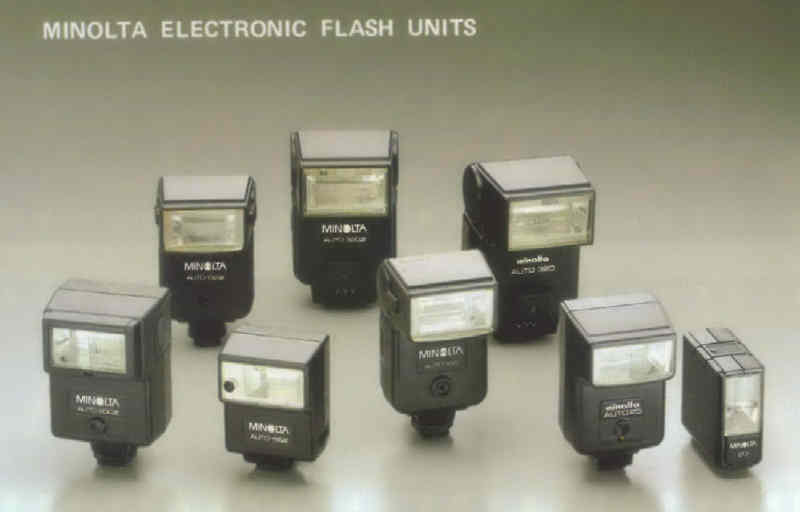
ELECTRONIC FLASH

All of the Chinese/Minolta 35mm SLR cameras have a flash shoe. Most were built in, but not all. Most of these were hot shoes, but not all. Some of these were dedicated hot shoes. And a couple of these were TTL dedicated hot shoes.
Some of the Chinese/Minolta 35mm SLR cameras had an "X" PC (FYI, short for "Prontor-Compur") connection for electronic flash use, but many did not.
Some of the Chinese/Minolta 35mm SLR cameras had an "FP" PC connection for flash bulb use, but most did not.
And there were even Chinese/Minolta 35mm SLR cameras that had a hot shoe, and an "X" PC connection for electronic flash use, and an "FP" PC connection for flash bulb use.
We will explain it all here.
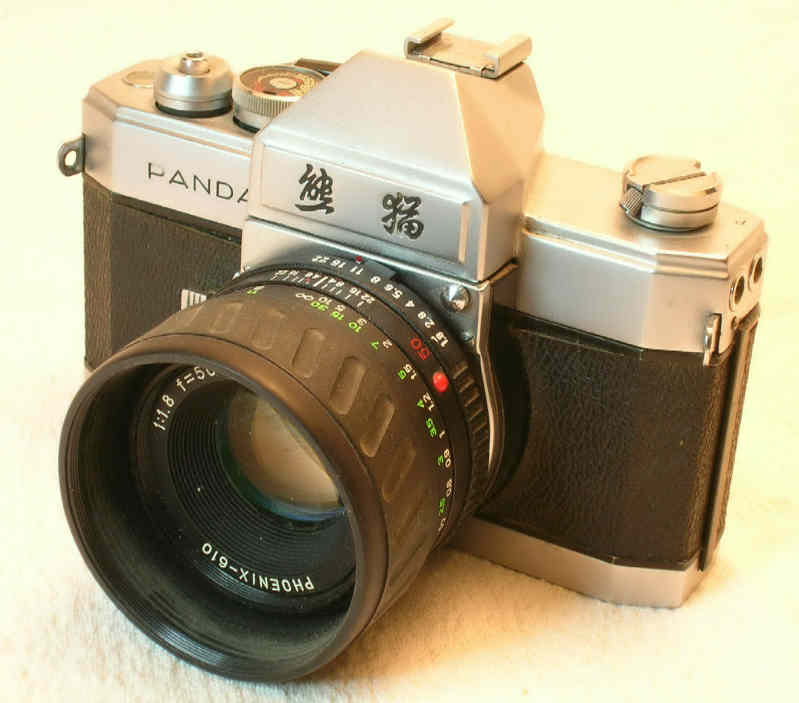
But a flash will only operate on a cold shoe with an electrical connection to the shutter. This is the purpose of the PC cord; it connects the shutter and the flash.
On the end of the Panda body are two PC connections/sockets -- as seen in the picture. One is marked "X", and the other "FP". The PC cord from the flash is plugged into one of these contacts. The "X" socket is for use with an electronic flash. The "FP" connection is for the use of flash bulbs.
Some cameras that have cold flash shoes, like the Panda, have both "X" and "FP" contacts, while other cameras only have an "X" connection. But if a camera has a cold shoe, it has to have one or the other -- or both!
Two of the Chinese/Minolta cold flash shoe cameras are somewhat different.
Cameras that have removable pentaprisms usually do not have flash shoes on the top, and this is true for two Chinese/Minolta cameras -- the Pearl River S-201 and the Mingca S-201M. Like the Minolta XK, which had a removable pentaprism, they do not have built-in flash shoes. The flash shoe was a plug-in accessory -- added ON TOP of the rewind knob!
Here is a Pearl River S-201 which shows the "X" and "FP" PC connections on the end of the camera body, similar to the Panda camera above:
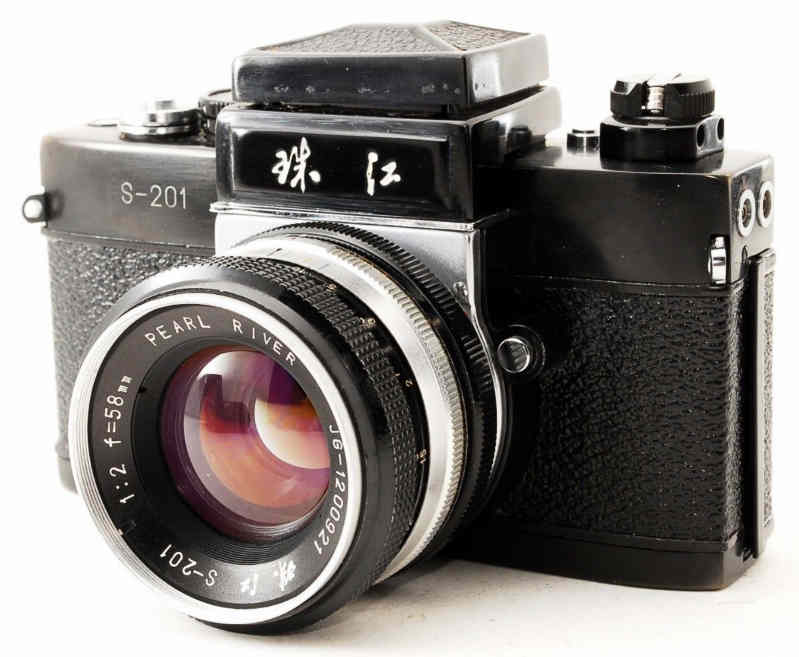
You will notice that underneath the rewind knob are two holes. These are for the accessory flash shoe -- here shown with a Mingca S-201M:
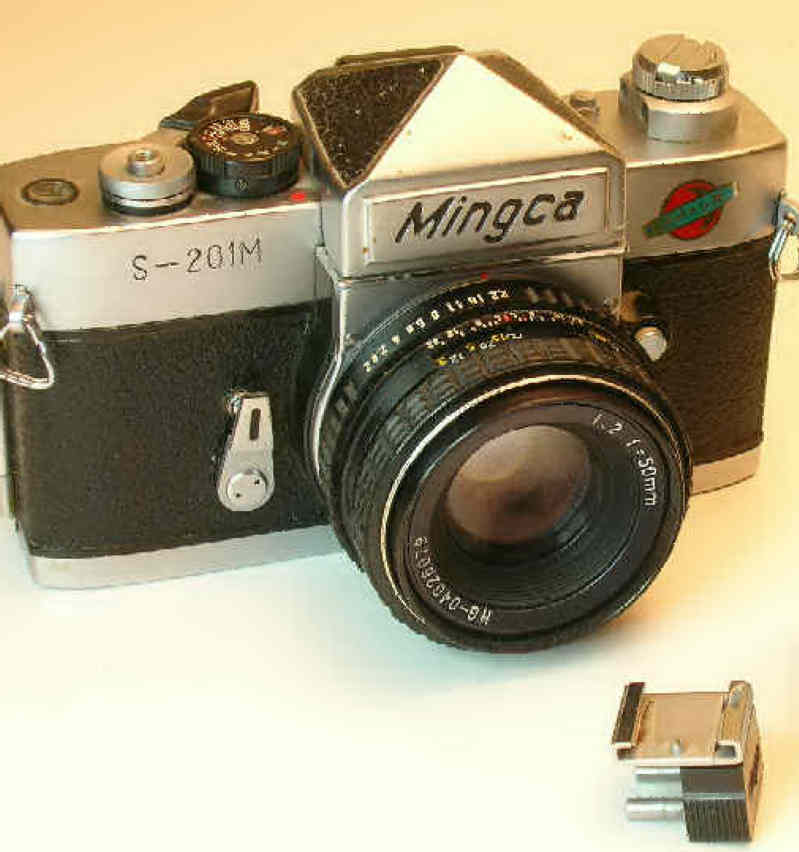
The two prongs on the flash shoe plug into these holes. The flash is then attached ,and the PC cord is connected to the flash and the camera. Both the Mingca and the Pearl River used the same flash attachment, and both are cold shoes.
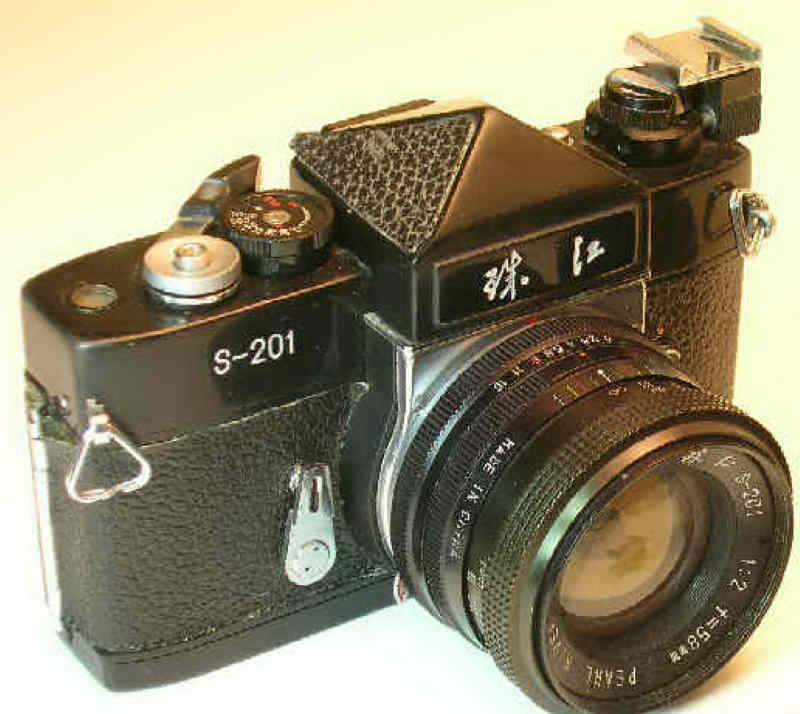
If you have a hot shoe-ONLY flash, it can be used on a cold shoe camera with the use of a simple adapter that fits into the cold shoe. It has a PC cable connection to the camera, and a hot shoe on the top for the flash. Here is a hot shoe ONLY Minolta flash on a cold shoe Seagull DF camera -- with an adapter in-between.
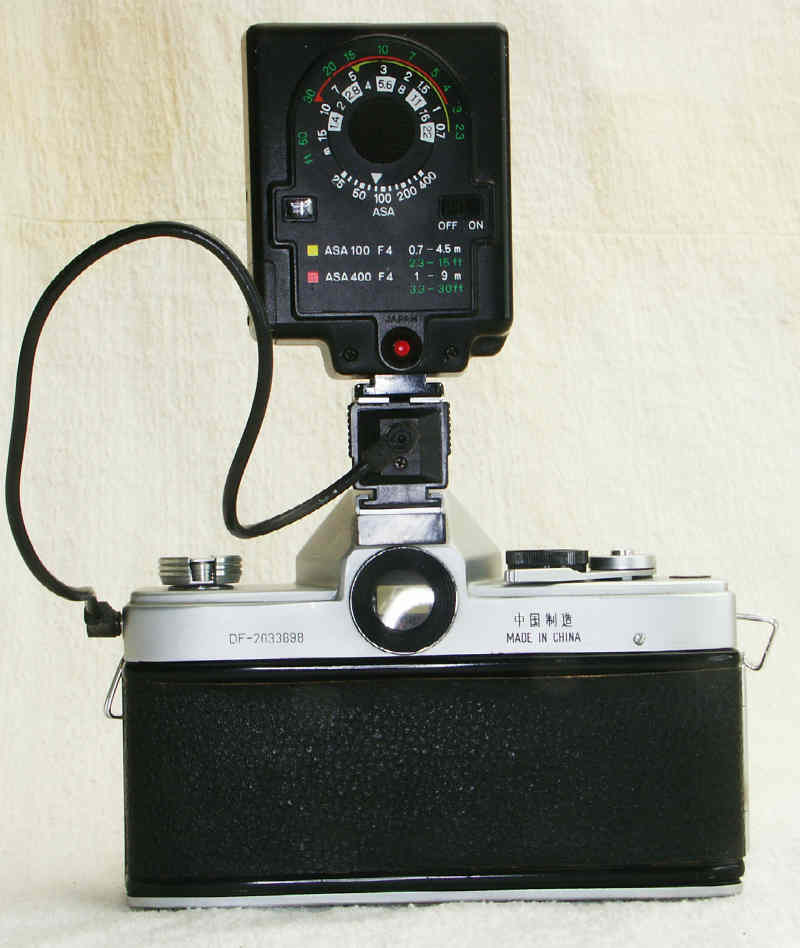
2. HOT SHOE -- A hot shoe is simply a cold shoe with an electrical connection
to the shutter built into the flash shoe of the camera. It is designed
to work with flash units that have a built-in hot shoe. They will work
with flash units that have a cold shoe, but ONLY if the camera
has a PC connection. Most Chinese/Minolta cameras have a hot shoe. Some
of these also have a "X" PC connection, such as the Huaxi S-80 (next to the
top of the self-timer):
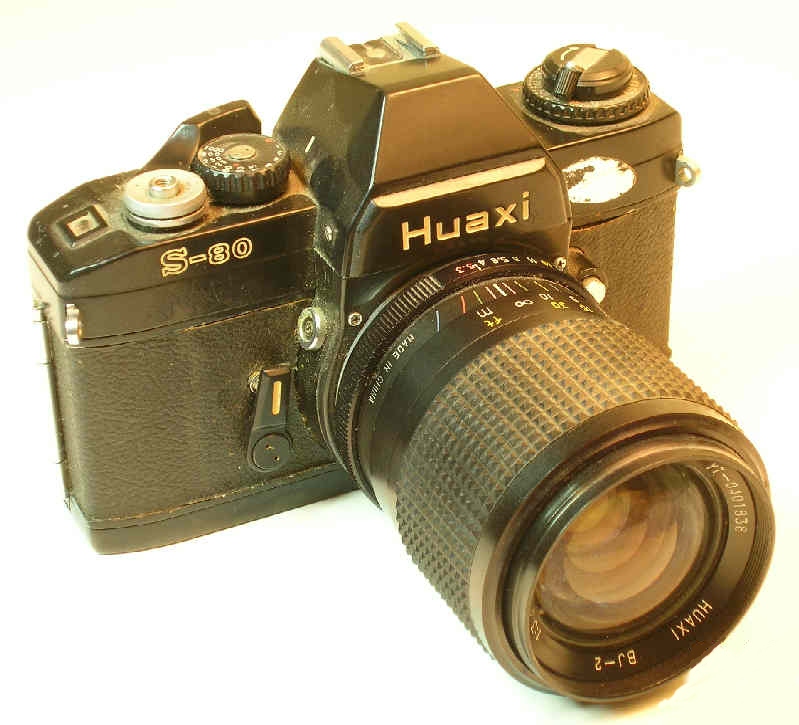
and a few have BOTH "X" and "FP" connections, such as this Peafowl DF.1:
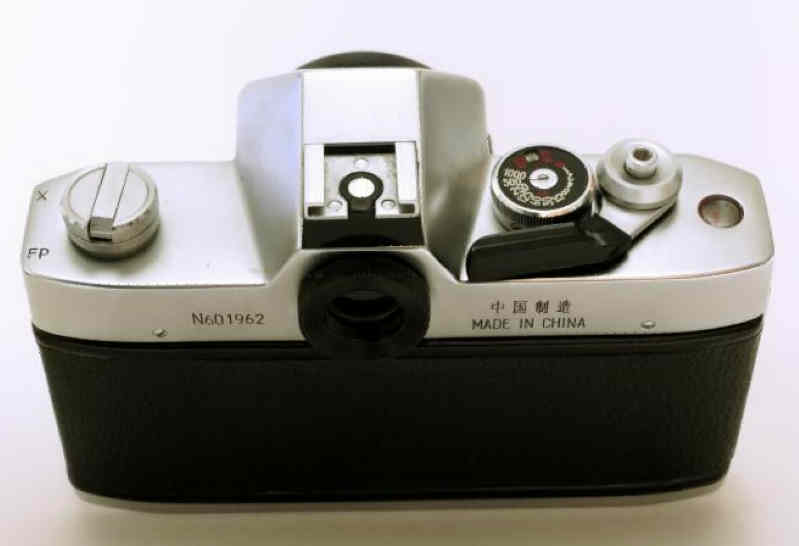
Most Chinese/Minolta 35mm SLR cameras that have a hot shoe DO NOT HAVE a PC connection at all. They are designed to be used only with hot shoe flashes, such as this Soligor SR-300MD:
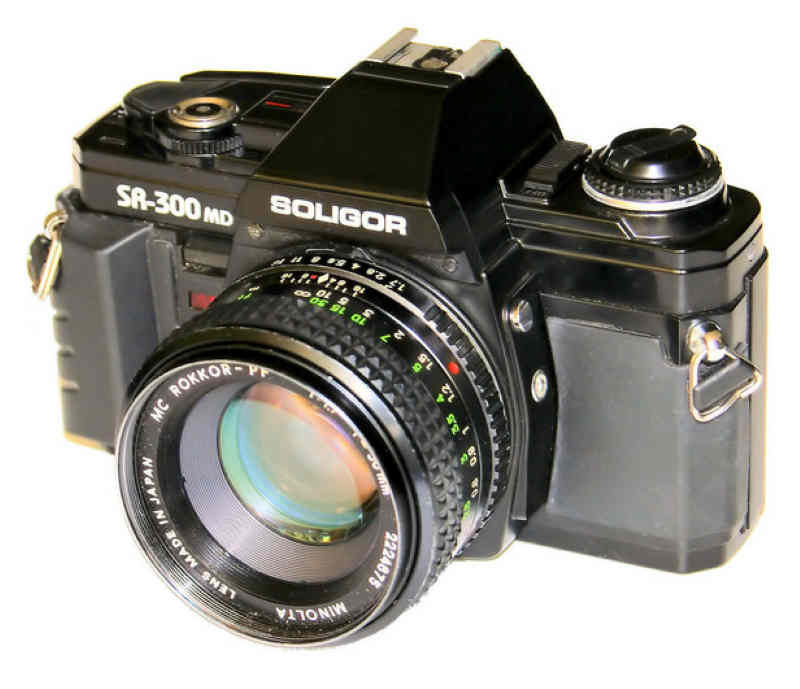
If you have a cold shoe flash, it can be used on a hot shoe ONLY camera with the use of a simple adapter that fits into the hot shoe. It uses the PC cable from the flash, and the hot shoe on the top for the camera. Here is a cold shoe Vivitar flash on a hot shoe ONLY Seagull DF-1000A camera -- with an adapter in-between.
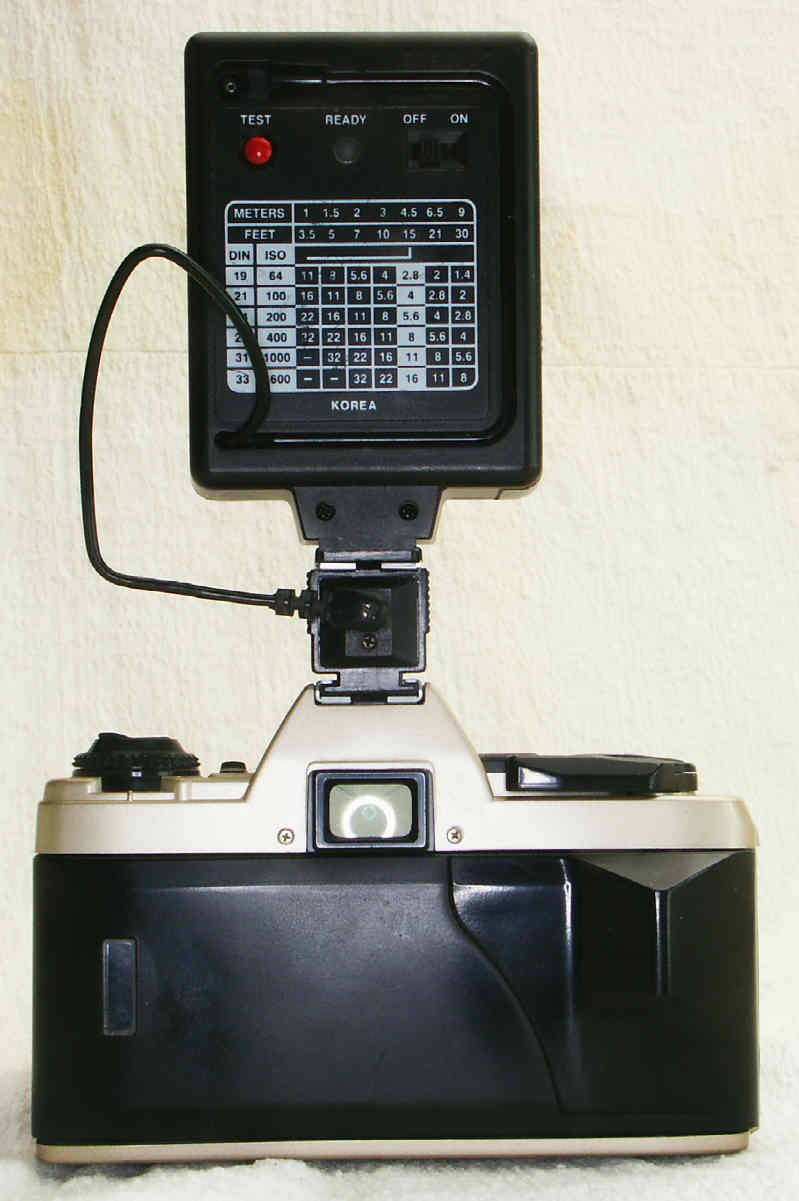
3. DEDICATED HOT SHOE -- A dedicated hot shoe is just a hot shoe that has
an extra connection between the flash and the camera, and provides additional
features -- depending on the camera. With some cameras, the flash --
when turned on -- sets the camera's shutter to the flash synch speed,
automatically. Some photographers like this for it's convenience, but
others don't, because it prevents them from choosing a particular shutter
speed. On some cameras, the flash causes an LED in the viewfinder to
blink when the flash is fully charged. And some cameras have both of
these features. Here is a Kalimar KX7000 dedicated hot flash shoe showing
the extra electrical flash connection:
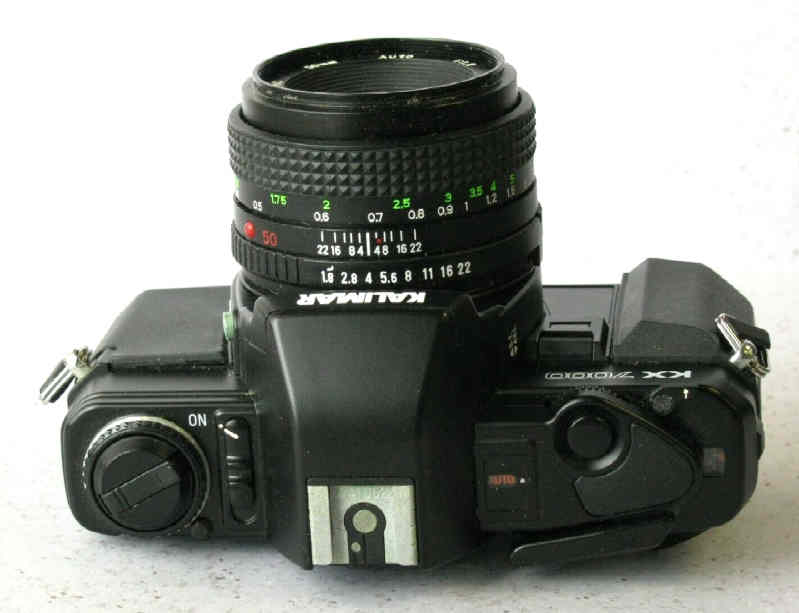
Many Chinese/Minolta 35mm SLR cameras have this feature, but others lack it in order to reduce costs.
Non-dedicated flash units, whether hot or cold shooed, can be used without
any problem on dedicated hot shoe cameras -- as mentioned above. They
just won't supply any dedicated functions that the camera might have.
4. TTL DEDICATED HOT SHOE -- A TTL hot shoe is a special dedicated hot shoe
that has an extra connection between the flash and the camera. It provides
TTL flash exposure IF the camera AND the flash both offer that feature.
The two Chinese/Minolta cameras that have this feature are the Seagull
DF-5000 and the Phoenix P-5000.
Here is a Seagull DF-5000 showing the additional pin in the flash shoe, which shuts off the TTL flash when the TTL meter in the camera determines that the exposure is correct:
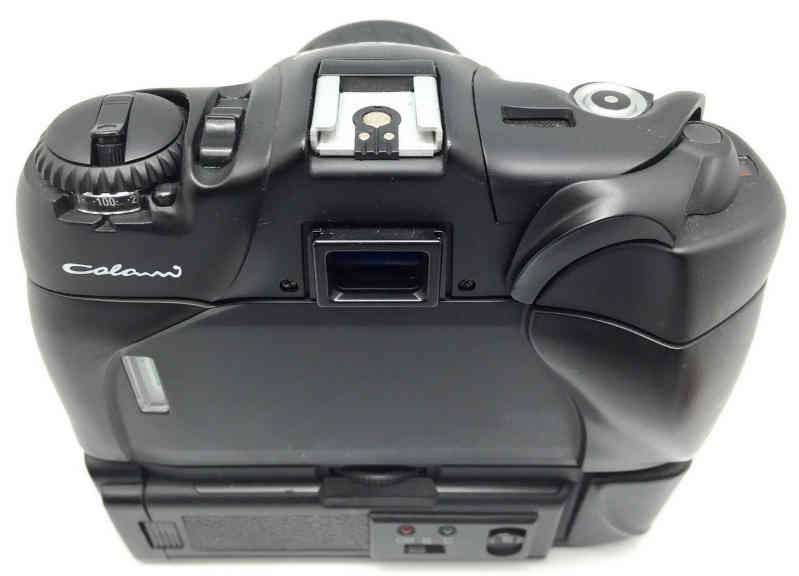
In order to use TTL flash, the flash unit must provide this feature -- FOR MINOLTA CAMERAS. A TTL flash designed for another camera company won't work. Many companies, such as Minolta, offer TTL flash units, but in order to be compatible with the Seagull DF-5000 or the Phoenix P-5000, it must be compatible with the Minolta X-700.
Non-TTL flash units, whether dedicated, hot or cold shooed, can be used without any problem on TTL hot shoe cameras -- as mentioned above. They just won't supply any TTL function even if the camera is so equipped.
Several companies made electronic flashes. These units appear under dozens of brand names. The most commonly seen brand name is Vivitar, but other brands include Minolta, Argus, Braun, Carena, Centon, Exakta, Kalimar, Phoenix, Revue, Seagull, and Soligor -- brands that also made Chinese/Minolta cameras. And there are many more flashes with other brand names -- far too many to list here!
But just because an electronic flash has the same brand name as your camera does not mean it will work with your camera. Similarly, just because an electronic flash has a different brand name than your camera does not mean it won't work with your camera.
You first need to determine what type of flash shoe your camera has -- regardless of the brand name -- and then determine what type of shoe the flash has -- again regardless of the brand name. A Vivitar flash can work perfectly on a Soligor camera, and a Soligor flash can work perfectly on a Vivitar camera -- IF THE CAMERA'S SHOE AND THE FLASH'S SHOE ARE COMPATIBLE.